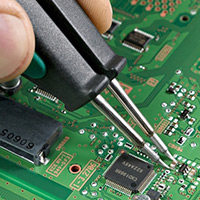

Pyrolytic Low Emissivity Glass Enhancing Energy Efficiency in Modern Architecture
Pyrolytic low emissivity (low-e) glass has emerged as a pivotal innovation in the field of building materials, especially for energy-efficient construction. As urban areas expand and energy consumption rises, the demand for sustainable building solutions becomes increasingly paramount. Pyrolytic low-e glass, with its unique properties, stands out as a critical element in achieving both energy efficiency and aesthetic appeal in modern architecture.
Pyrolytic Low Emissivity Glass Enhancing Energy Efficiency in Modern Architecture
One of the most notable advantages of pyrolytic low-e glass is its ability to improve energy efficiency. By minimizing heat loss in the winter and reducing heat gain in the summer, buildings utilizing this glass can maintain a consistent indoor temperature with less reliance on heating and cooling systems. As a result, energy consumption can be lowered considerably, leading to reduced utility bills and a smaller carbon footprint.

Moreover, the application of pyrolytic low-e glass contributes to increased occupant comfort. By stabilizing indoor temperatures and reducing glare, it creates a more pleasant living and working environment. The natural light that permeates through low-e glass enhances the aesthetic appeal of spaces, making them appear larger and more inviting while simultaneously protecting interior furnishings from harmful UV rays.
In terms of sustainability, pyrolytic low-e glass plays a crucial role in green building initiatives. Its ability to reflect solar energy not only contributes to energy savings but also aids in compliance with various environmental standards and certifications. Many architects and builders are increasingly incorporating this glass into their designs, recognizing its significant contribution to sustainable construction practices.
In conclusion, pyrolytic low emissivity glass is revolutionizing the way buildings are designed and constructed. Its combination of energy efficiency, durability, and aesthetic benefits make it an essential material in the quest for sustainable architecture. As the world continues to grapple with the challenges of climate change and urbanization, innovations like pyrolytic low-e glass will undoubtedly play a critical role in creating a more energy-efficient and environmentally friendly future.